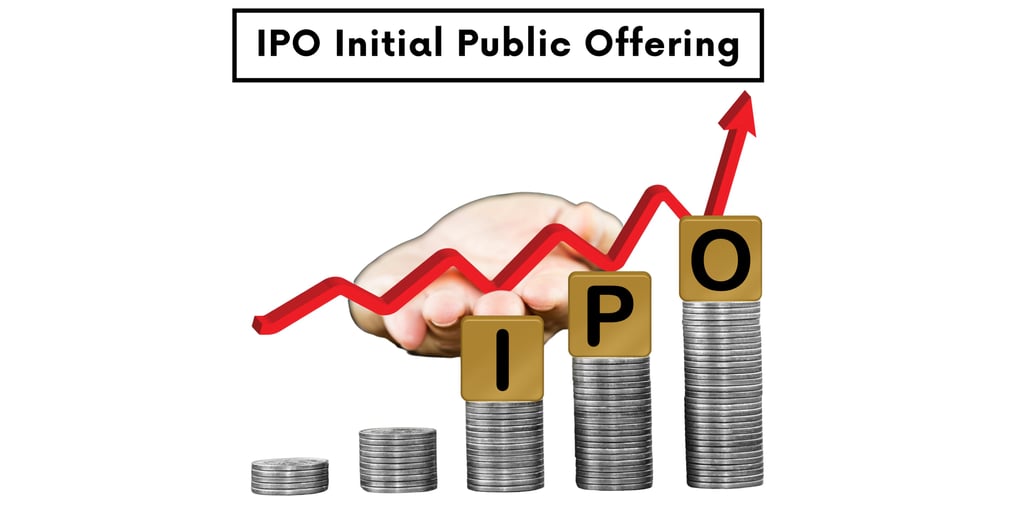What Is an IPO? A Beginner’s Guide to Initial Public Offerings


INTRODUCTION
When a private company decides to raise money from the public and list its shares on a stock exchange, it goes through a process known as an Initial Public Offering, or IPO. This is one of the most important events in a company’s life and often marks the beginning of a new phase of growth and visibility. For investors, IPOs can represent opportunities to invest in young, fast-growing businesses before they become household names. But they also come with risks, and understanding the basics is essential before deciding to participate in one.
In this blog, we will break down what an IPO is, how it works, and what investors need to know before buying into newly listed companies.
What Is an IPO?
An IPO, or Initial Public Offering, is the process through which a private company becomes public by offering its shares to the general public for the first time. Once the IPO is completed, the company’s shares are listed on a stock exchange like the New York Stock Exchange (NYSE) or NASDAQ, and can be freely bought and sold by investors. Before an IPO, a company’s ownership is usually limited to its founders, early investors, and private equity firms. After an IPO, the company becomes accountable to a broader base of shareholders, and its financials must be disclosed regularly to regulatory bodies like the Securities and Exchange Commission (SEC).
Why Do Companies Go Public?
There are several reasons why companies choose to go public. The most common reason is to raise capital for future growth. By selling shares to the public, companies can access a large pool of money that can be used to expand operations, launch new products, hire talent, reduce debt, or enter new markets. Another reason is to provide liquidity to early investors and employees who have equity in the company. Going public gives them a way to sell their shares and realize returns on their investments. An IPO also enhances the company’s reputation and visibility. Being listed on a public exchange brings credibility and often opens doors to strategic partnerships.
How the IPO Process Works
The IPO journey starts when a company appoints investment banks, known as underwriters, to help manage the offering. These banks help the company prepare the required documents, including a detailed filing known as an S-1 with the SEC, which outlines the company’s financials, risks, and business plans. The underwriters then work with the company to determine the price range and number of shares to be offered. They promote the IPO to institutional investors through roadshows, gather investor interest, and finally agree on the issue price. Once the IPO is launched and shares are allocated, the company gets the capital raised, and its stock begins trading publicly on the chosen exchange.
Real-World Examples
To understand IPOs better, let’s look at a few U.S. companies that went public and what happened afterward.
When Facebook went public in 2012, it raised over 16 billion dollars, one of the largest IPOs in U.S. history at that time. Initially, the stock struggled after listing, but over the years, Facebook (now Meta Platforms) grew into one of the world’s most valuable tech companies.
In 2020, Airbnb made headlines with its IPO during the pandemic. Despite tough market conditions, its stock soared on listing day, reflecting investor optimism about the company’s long-term potential in the travel industry.
Snowflake, a cloud data company, also went public in 2020 and became the largest software IPO ever. Backed by strong institutional demand, its share price more than doubled on the first day of trading. These examples show that IPOs can generate massive investor interest, but they also come with volatility and uncertainty.
What Happens After an IPO?
Once a company is listed, it becomes a public company. This means it must follow stricter financial regulations, report quarterly earnings, and answer to shareholders. Its share price will now move based on market demand, performance, news, and investor sentiment. The company’s insiders, like founders and employees, are often subject to a lock-up period, usually lasting 90 to 180 days, during which they cannot sell their shares. This is to prevent a sudden flood of selling pressure right after the IPO. Over time, a company’s performance in the stock market will reflect how well it delivers on the growth and financial expectations set during the IPO.


